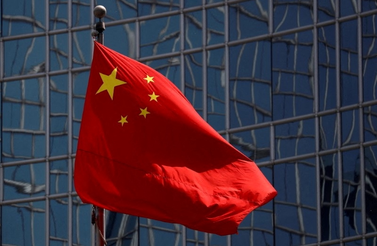In part 1, I outlined the challenges that Canada, the United Kingdom and the United States share with regard to 5G (fifth-generation) technology, which extend beyond national security to encompass economic security, competitiveness and innovation leadership.
What is clear, in this broader discussion, is that Canada and its Western allies need a new playbook with which to compete with China and succeed in the evolving global economy, where the rules have changed, along with the balance of power.
The United Kingdom’s recent shift to action, following the United States’ strong campaign, emphasizes how important it is for Canada to join its allies with a concerted, forward-looking 5G strategy.
Here I will offer a six-point path forward, based on the recommendations I made to the UK House of Commons Science and Technology Committee hearing in July 2020, regarding the inquiry on the United Kingdom’s telecommunications infrastructure and domestic capability.
Partner with the United Kingdom and the United States
All three countries took their eye off the “5G ball” and missed the economic opportunity to be a significant global player in 5G equipment. However, Britain and the United States have launched steps to catch up, which include fostering the innovation and commercialization of Open RAN (Radio Access Network) companies as another choice for 5G networks, in addition to other initatives. Therefore, in order to further accelerate their 5G catch-up strategy and gain a faster time-to-market and market share, all three laggards will gain through collaboration (especially Canada, which is furthest behind in taking 5G action), by pooling their respective assets and core competencies to accelerate a strong 5G commercial position.
In this joint venture between the three nations, Canada and the United Kingdom would contribute their 5G intellectual capital. Each can lend significant 5G intellectual property (IP) and competitive insights, given the research their universities have already been doing for Huawei, in addition to research done at other innovation labs.
The US role would be to take the lead in determining how to mobilize and commercialize that intellectual capital.
Since the inquiry recommendation, the USA’s Science Advisor to the President and Canada’s Minister of Innovation, Science and Industry met to discuss formulating a bilateral science, technology and innovation (ST&I) cooperation agreement in November of 2021. Perhaps this agreement could specifically include 5G initiatives. Also, Canada could reignite a similar collaborative agreement with the United Kingdom in order to further stimulate this suggested 5G trilateral partnership to catch up on 5G.
Institute an “Industrial Policy 2.0” Model
The goal here is to foster globally competitive, strategic companies in science and technology but within a remodelled industrial policy approach that I call “industrial policy 2.0,” which is a tighter, more productive coupling between government, academia and the private sector, with an amicable, collaborative tone. It requires a shift from what industrial policy may have traditionally been perceived to be in the past in order to be more successful in this current global competitive environment.
Canada was once a global leader in the telecom industry, with Nortel in the forefront. However, a short-term, low-cost decision — essentially, to allow the technology slip away after the company ran into serious trouble — has resulted in an immense gap for Canada in 5G, impacting industry and academia, as well as national security.
Years of under-optimization of Canada’s intellectual capacity and innovation research can’t be fixed overnight. Canada requires a long-term economic growth strategy, as China has, to ensure that investments are being made in the country’s long-term interests. What are Canada’s five-, 10- and 20-year plans?
Enhance Commercialization of Innovation
While Canada and the United Kingdom are strong on the research and development (R&D) side of innovation, they need to create and enforce policy for the end-to-end realization of innovation in the market. Researchersand innovators need to be mobilized throughout the entire life cycle of innovation — from ideation, to creation, to product development and commercialization. Capacity and capabilities need to be developed, and they may not all reside in the same pool of individuals or organizations. Government-funded innovation hubs must provide metrics on commercialization success, in addition to the current metric of number of partners researching and testing new technologies.
Become Innovative at Innovation
All Western nations need to become more innovative at innovation if they want to successfully compete against a new genre of emerging competitors. They must overcome the complacency that has accrued from having been innovation leaders for decades. It’s time to refresh and reinvent our approaches to innovation.
As I’ve written in The China Factor, one way to do that would be to create new innovation models and approaches, such as business model innovation — that is, leveraging existing product innovations and reapplying them to different markets in a new way with unique and customized go-to-market strategies. In The China Factor, I described the case of the Chinese company Xiaomi, which did exactly this and at one point skyrocketed to the rank of number three in the smartphone market in only five years. How? They applied business model innovation and emulated the Apple iPhone look and feel, used the Google Android operating system, hired the Google vice president of the Android product (recruited Western talent), and customized the solution for the unique local market dynamics in China by leveraging WeChat for customer acquisition and loyalty.
Create a Top-Down, Unified IP Strategy to Monetize IP Assets
The Canadian government should start behaving more like a successful business by focusing on economic security and gaining an ROI (return on investment) for disbursed innovation funding. Innovation, Science and Economic Development Canada and other federal departments might consider instituting more rigorous accountability for investments in innovation, in particular those of high priority in economic security, such as 5G. They could start by taking ownership of the IP invested in start-ups, innovation hubs, incubators and the like. If the company succeeds, what is Canada’s ROI? And if the investment is for innovation hubs, what are the metrics that measure eventual commercial success or monetization impact? Further, if a funded company or innovation initiative fails, the government should reclaim the IP as an asset and redeploy it in revenue-earning capacities.
Take a More Competitive Approach to IP and R&D
Canada must be more discerning when sharing intellectual capacity and property. It’s a new world order. There are more assertive emerging competitors, sometimes from nations that are not Canadian allies, who are using this IP to race ahead of Canada. For example, Canada should consider shutting down, or limiting access to, open-IP sharing tools.
The federal government should also recentralize academic research practices, create unified policies and add federal oversight to provincially delegated decisions about the companies that academics are researching for and with, in order to support economic security goals. The 5G research that Canadian academics are currently producing for China’s Huawei is a prime example of where this federal oversight and decision making can begin. And if academic institutions choose to conduct research for Huawei or other foreign companies, the government should ensure they are maximizing a financial return for Canada from this engagement. (see part 1 regarding forgoing licensing revenues)
A New Playbook for Future Success
The Western capitalist democracies, led by the United States, the United Kingdom and Canada, need to create a new system in order to protect and grow their innovation advantage and to better compete with China.A new playbook is required. At its heart should be industrial policy 2.0, the national government playing a more active role in ensuring that economic security, innovation and national security are aligned and advanced simultaneously. The race for 5G is an ideal domain in which to launch this evolved approach. The consequences of failure here are dire. Should we fall further behind, recovery will be difficult in the coming decades.




